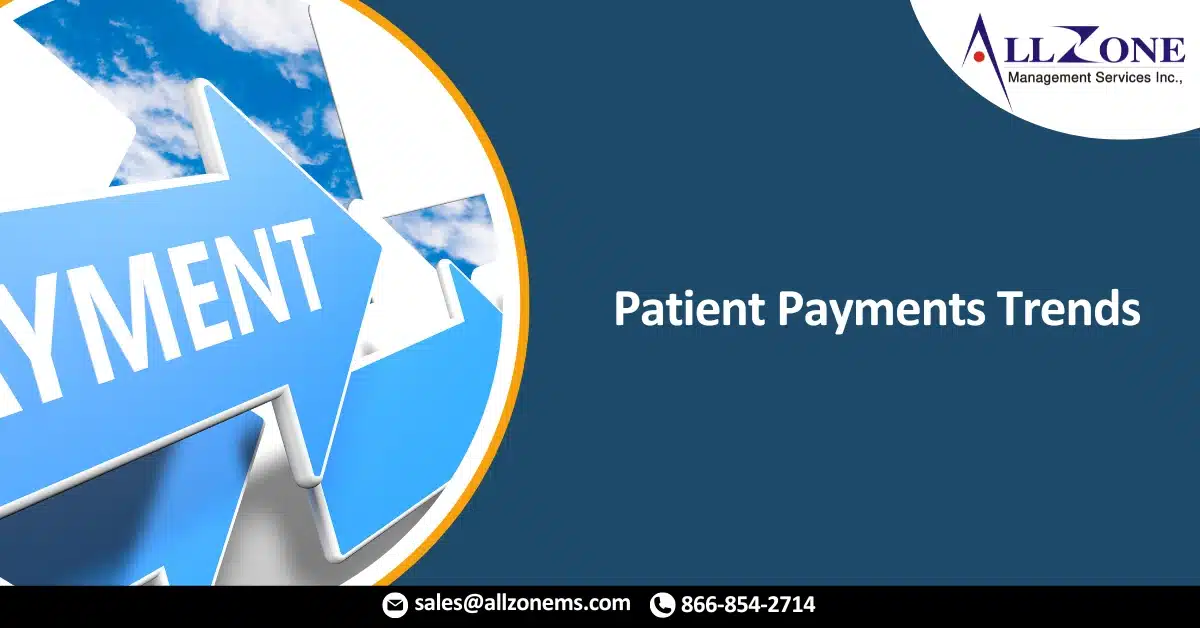Device agnostic digital patient intake; buy now, pay later; compassionate billing; and AI-enabled customizable payment plans are four trends that rev cycle leaders should watch as the pandemic rages on.
Despite promises of a “hot-vaxxed summer,” the COVID-19 pandemic is raging on, more forcefully in some places than ever before. It’s also continuing to take a toll on healthcare consumers, both emotionally and financially.
That’s one of the reasons it’s more important than ever for revenue cycle leaders to stay on top of the latest payment trends, all of which put more control into consumers’ hands when it comes to paying their healthcare bills.
Here are four patient payment trends to watch.
THE TREND: ENABLING DIGITAL PATIENT INTAKE FROM WHATEVER DEVICE PATIENTS HAVE IN THEIR HAND.
The execution: With RevSpring’s new Arrived Patient Intake, known information is pre-filled in digital intake forms, and sessions are persistent, so the patient can begin filling out forms in one session and finish them later without losing any information, even on different devices.
How it works: “Our Arrived Patient Intake solution provides multiple interaction points for the patient. It can start with an email, text, or phone call reminding them of their appointment and providing self-service opportunities to complete clinical intake forms, make a copayment, upload an insurance card, and understand and take action on their cost estimate,” says Howard Bright, vice president of patient engagement at RevSpring.
How it boosts payment: “Patients are increasingly interested in the easiest path to payment. When a patient puts a card on file at pre-service it makes it easy and convenient for them to pay their copayment at their follow-up visit or use text-to-pay for their final balance. They expect their healthcare payment experience to be as easy and straightforward as their consumer experience,” Bright says.
THE TREND: “BUY NOW, PAY LATER” (BNPL)
The execution: For hospitals and health systems, BNPL takes the form of personalized payment plans through companies like VisitPay, which allows consumers to set payment terms that are realistic for their own lifestyles and budgets, without “relying on third party finance providers,” says Vince Martino, chief product officer and co-founder of VisitPay. “This enables health systems to build long term relationships with their patients and gives health systems control over the entire patient experience.”
How it works: “VisitPay research shows that of those patients using credit cards to pay for medical debt, three-quarters maintain a balance over multiple months (often paying 10% or more in interest). That’s why BNPL is beneficial to patients: It allows them to break up high dollar bills, improves the patient experience, and can eliminate interest with compassionate hospital-driven financing. The increased control patients have over their experience removes the stress associated with paying bills,” says Martino
How it boosts payment: “When patients are given personalized financial recommendations, we’ve found that they are more likely to pay their balance in full and less likely to miss payments. Between 2019 and 2020, we saw missed payments on BNPL plans in VisitPay decline by 25%, signifying that BNPL encourages patients to remain engaged with their medical bills when they’re presented with affordable options that fit their budget. When health systems empower patients to manage their medical bills, both the patient and health system benefit,” says Martino
THE TREND: COMPASSIONATE BILLING
The execution: Compassionate billing “is the practice of healthcare providers supporting consumers in need during uncertain times, whether it’s from unemployment, traumatic experiences—or most relevantly, the ongoing pandemic,” says Florian Otto, MD, PhD, co-founder and CEO of Cedar.
How it works: “Compassionate billing can include flexible payment plan options and temporarily extended billing cycles, which can help consumers that may be out of work or need to prioritize other living expenses…Personalizing these experiences based on preferences and making sure customer service representatives and patient communication materials are going the extra mile to demonstrate kindness to everyone can help turn a potentially stressful situation into one that consumers are comfortable with and willing to repeat,” Otto says. “For example, enabling customer service representatives to grant consumers more relaxed payment plan terms and generous discounts can give them some much needed extra financial breathing room and demonstrate a firm commitment to helping them get through this tough period, which should be the focus of all healthcare organizations.”
How it boosts payment: “Extending billing cycles from 120 to 150 days can make a big difference for some individuals and potentially prevent fewer accounts sent to collections. Additionally, our data shows that the size of monthly payments toward a plan doesn’t impact collection rate, suggesting patients choose amounts that fit their monthly budget. By offering more payment plan options, patients will likely make this optimization,” Otto says.
THE TREND: AI-ENABLED CUSTOMIZABLE PAYMENT PLANS
The execution: Geisinger is teaming with fintech startup PayZen for a new AI-backed, customizable approach to medical billing where patients have the power to select zero-interest payment plans that that can be paid over a timeline of their choosing.
How it works: Patients receiving Geisinger bills for out-of-pocket expenses will be invited to pay the bill in one lump sum, or over many months, on a timeline that works for their personal financial situation. If they elect to pay their balance over time, they can choose from several customized payment plans, all without fees or interest. The payment plans will be made available to all Geisinger patients with out-of-pocket balances over $250 after insurance payments.
How it boosts payment: During the initial rollout, 82% of patients enrolled after receiving their customized monthly payment plan, with an average monthly payment of $52. According to Geisinger and PayZen, the program is enrolling hundreds of patients each month.
For More Information: 4 patient payments trends watch

